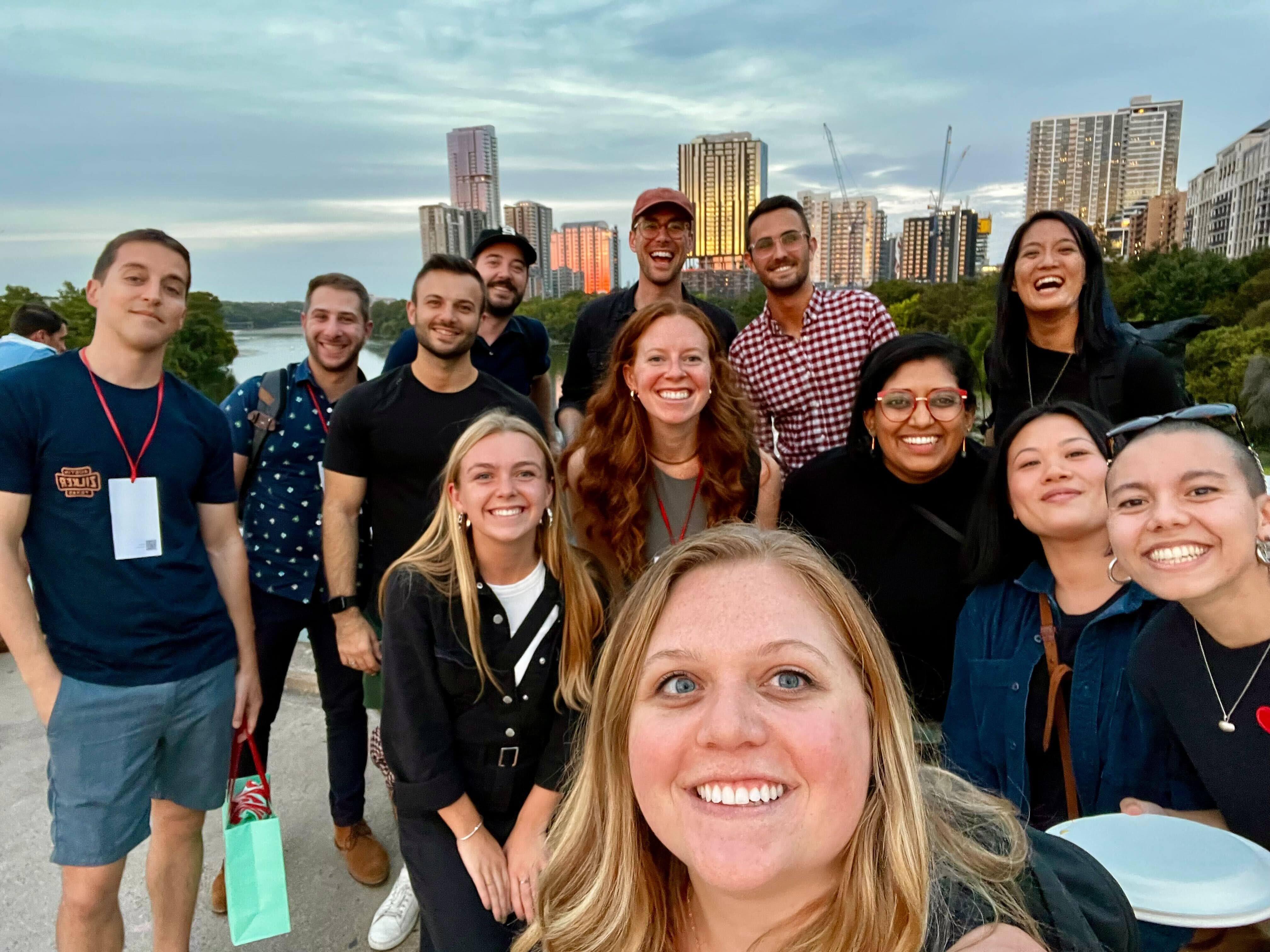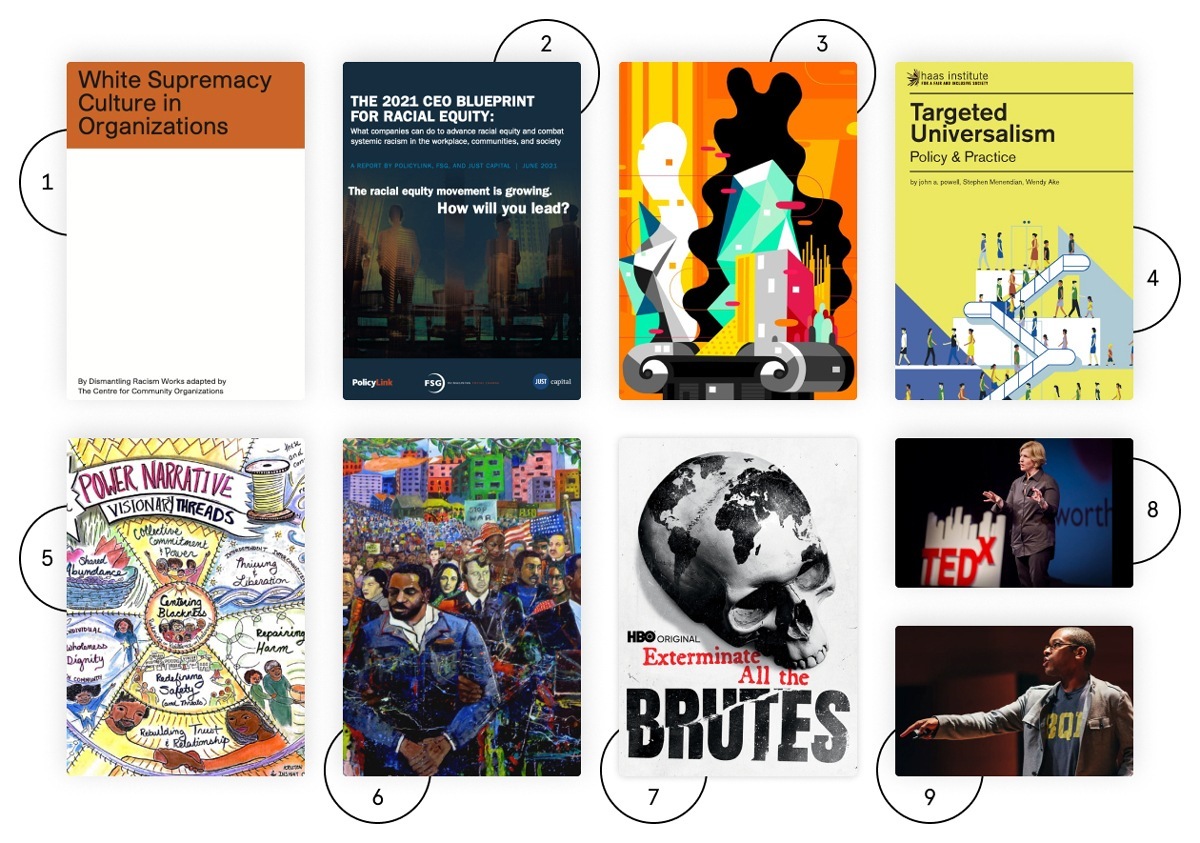
As we kick off another year, many of us are looking back, assessing the past year’s resolutions and progress on initiatives we set for ourselves or our businesses. At Blink, we’re doing the same.
In 2022, we continued to make progress on our commitment to DEI (created in 2020). As we take stock and share our work here, we hope this article can act as a helpful guide to others on this journey and give a transparent look into what we are doing to make tech a more equitable and inclusive place.
Based on our annual internal cultural survey and company-wide demographic reporting, we determined four areas of improvement going into 2022:
- Hiring
- Onboarding
- Career pathways
- Our design process
Let’s dive into each one more closely.
How we improved our hiring process
At the start of the year, our top priority was increasing BIPOC representation in our interview loops — from application to the final round and offer stages.
In years prior, we began to reshape our recruiting practices, making strides to become more equitable and inclusive in a process that is crucial to moving the needle in DEI. We implemented mandatory inclusive hiring training, practices for writing inclusive job descriptions, a standardized interview process for every role, and an anonymous feedback process for the hiring teams to use post-interview. Despite these efforts, we still weren’t seeing the diverse representation we wanted to see in our candidate pools.
Our recruiting team discussed ways to improve our hiring processes and chose four key focus areas.
We expanded where we post jobs.
We went from relying on LinkedIn to get our roles out into the world to using job boards that target BIPOC candidates. This took a lot of trial and error as we worked to find job boards that would produce results for our specific industry and role types. Our favorite, most reliable boards are Pink Jobs and Women In Technology.
We also continued using tools like the Gender Decoder to ensure the language we use in each job description is inclusive.
We expanded our sourcing efforts.
We knew the job boards would only take us so far. We needed to seek out passive candidates through a proactive search. Knowing that our goal was to increase BIPOC representation in our applicant pool, we set out to source candidates from places we might not have traditionally looked.
We expanded our hiring policy to include new states, knowing that confining ourselves to Washington, California, Texas, and Massachusetts was a limiting factor. We also broadened our sourcing platforms beyond LinkedIn Recruiter by using Slack groups such as Where are the Black Designers?, Women in Tech, Queer Design Club, and Latinas in Tech, as well as attending networking events hosted by BIPOC organizations.
We asked for more participation from employees.
Having a few recruiters work on this initiative wasn’t going to drastically move the needle, no matter how talented or passionate our recruiters are (which they most definitely are!). We needed to partner with other Blinkers to make a real impact. First up were our core hiring managers.
We brainstormed with each team to see how we might reach more BIPOC candidates. Our first project was to align and standardize our hiring criteria by ensuring that we evaluate every candidate against the same rubric. We made sure that this rubric didn’t disadvantage people with backgrounds different from ours.
Another successful strategy that netted great results was purchasing LinkedIn Premium accounts for members of our leadership team. Our hiring managers also volunteered to do informational interviews with candidates who might be on the fence about interviewing for a position. This additional touchpoint brought more quality candidates into the funnel and through to offers.
We started tracking Equal Employment Opportunity (EEO) data.
In 2022, we began asking applicants to fill in their EEO data voluntarily in order to measure progress in our hiring initiative. This year allowed us to get a benchmark; next year, we will continue to monitor progress and make changes as necessary.

How we improved onboarding
We’ve always prided ourselves on having an organized onboarding experience, but when we took a closer look, we noticed some serious pitfalls — failing to document many of our important processes, relying heavily on institutional knowledge (which left room for a lot of ambiguity), and not giving employees enough time to adjust to a new company before launching into project work.
We created a committee of leadership in research, design, project management, and HR to tackle our onboarding refresh. Our goal was to make employees feel included from day one, remove ambiguity, set a clear baseline, and have some fun along the way. We built a new cohort onboarding program that ran twice per month. Having new employees onboard as a group allowed us to efficiently execute a more time-consuming onboarding program and invoke collaborative camaraderie right from the start.
We also created additional resources for new employees, including a “New Hire Checklist,” links to role-specific educational resources, and suggestions for how employees can use downtime during their onboarding weeks.
Our biggest effort was the one that has paid off the most — we created live onboarding sessions that new employees attend each day for about eight days. Sessions such as “Culture at Blink,” “How We Design,” and “Consulting Best Practices” focus on different aspects of the business and the new employee’s role within it.
How we enhanced our career pathways
We knew having an equitable and inclusive process for professional development was essential to ensure employees will thrive.
The largest portion of our employees are design and research professionals, so we decided to focus on updating the internal leveling criteria and skill sets in these two departments as a first step. We have an internal tool, The Grow Tool, that allows employees to view skill tracks within their career path and review the skills they should develop to grow their career at Blink.
Employees work with managers in their monthly check-ins to discuss which skills to focus on improving. Our skill tracks had become outdated since their introduction in 2015 and no longer felt clear to our employees. Our design and research leadership reviewed and updated the skills to offer additional clarity and context for each level of practitioner advancing their career at Blink.
As a next step, we’re working with leadership in non-research and design departments to achieve the same level of clarity across the entire organization.
Evolving our user-centered design process
Through the experiences we design and partnerships we form, we have the opportunity to build more equitable products and prioritize impactful outcomes for Black people, indigenous people, and people of color. In 2020, in response to global movements for social justice, we drafted a racial equity roadmap for our UCD practice, which has evolved over the last two years.
This past year saw the biggest progress yet, largely from working with an outside DEI consultant, Sloane Kali Faye, Ph.D. By collaborating with Dr. Faye, we shifted from creating a list of tactical action items without a solid foundation to creating an evidence-driven framework and a foundational compass to guide our process for dismantling structures and norms that upheld racist inequity within our practice areas.
We started by gathering evidence through extensive required readings recommended by Dr. Faye (included at the bottom of this post). Next, we synthesized our takeaways in a series of workshops, captured our vision and principles in a Racial Equity Framework, ideated on how to bring the vision to life in tangible efforts, and prioritized these efforts into a simple “Now, Next, Later" roadmap — essentially leveraging our evidence-driven design process to craft our approach to this work.
We kicked off the following in-process efforts as a result of our new framework:
- Optional continued education for Blinkers with recommended reading and weekly discussions
- Creating racial equity participant recruiting guidelines for our research studies
- Elevating racial equity and broader DEI goals in our project kickoffs and stakeholder interviews
- Providing training to champion racial equity across all our consulting
Continuing our DEI journey in 2023
As we take stock of our progress in the DEI space this year, I feel incredibly grateful for all the Blinkers who helped us carry this work forward. There is no DEI “team” at Blink; it takes every employee championing these values and initiatives to make a difference. I’m glad to be on this journey with this group of people and can’t wait to see what's to come.
Blink's DEI reading list

- White Supremacy Culture in Organizations
- The 2021 CEO Blueprint for Racial Equity
- The Curb-Cut Effect
- Targeted Universalism
- Centering Blackness: The Path to Economic Liberation for All
- Ida B. Wells and the Economics of Racial Violence
- Exterminate All the Brutes (video)
- Brené Brown: The power of vulnerability (video)
- Wil Reynolds: The Hidden Danger of Confusing Outputs for Outcomes (video)



